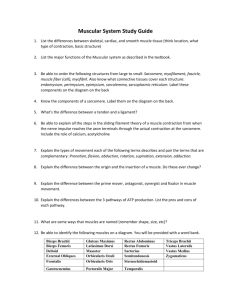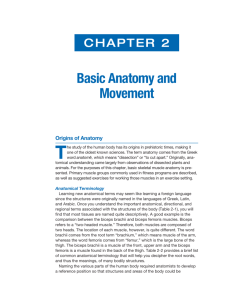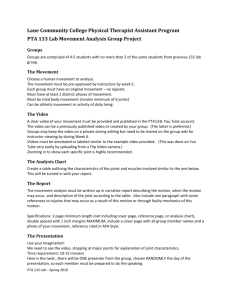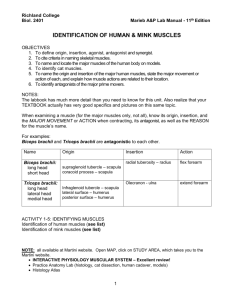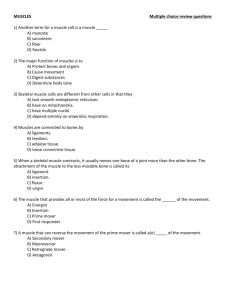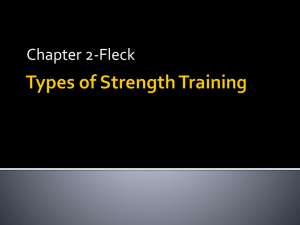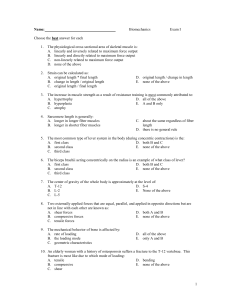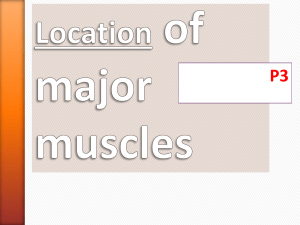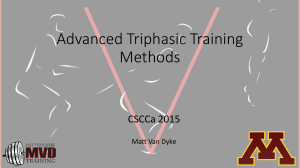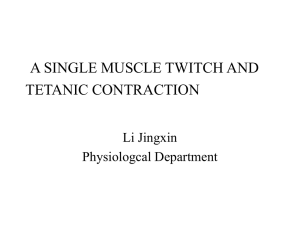Developing the Research Problem
advertisement
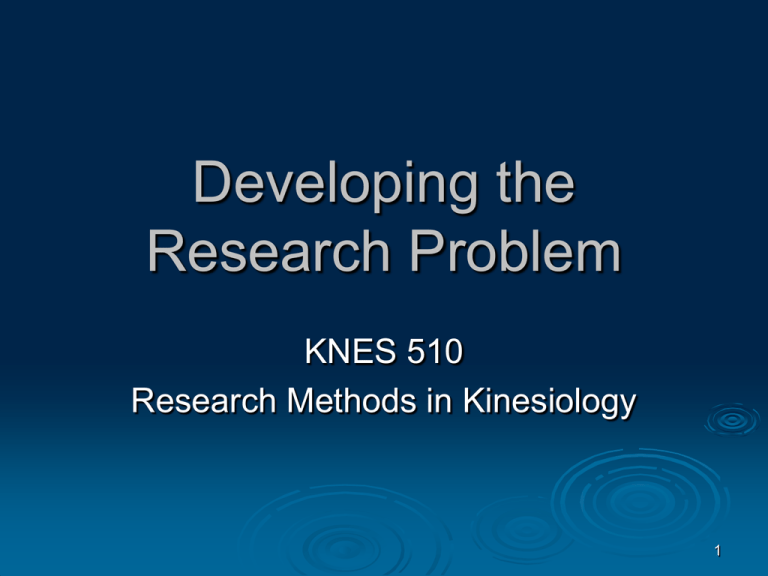
Developing the Research Problem KNES 510 Research Methods in Kinesiology 1 Finding a Topic Be aware of research being done in your department by the research faculty (website) Be alert for controversial issues in your area of interest Read a review paper primary source – firsthand source of data in research; the original study secondary source – source of data in research in which an author has evaluated and summarized previous research 2 Criteria in Selecting a Research Problem Is the problem in the realm of research? Does it interest you? Is it worthwhile? Is it feasible? Is it timely? Can you attack the problem without prejudice? Are you prepared in the techniques to address the problem? 3 What’s the Difference? Purposes of the Literature Review Identify the problem Develop the hypotheses Develop the methods 5 Steps in the Literature Search Write the problem statement Consult secondary sources 1. 2. – – Determine descriptors (CV) Find primary sources using 3. 4. – – 5. 6. Encyclopedias Research reviews Indexes and bibliographies Computer searches Read and record the literature Write the literature review 6 Step 1 – The Problem Statement Specify the research question you are asking Be complete but concise 7 Step 2 – Consult Secondary Sources This step is necessary only if you have very limited knowledge of your subject Encyclopedias – Dated info but provides basic terms, appropriate journals, etc. Research reviews – written by experts, summarizes current research, provides suggestions for future research 8 Step 3 – Determine Descriptors Critical Variables Terms to help locate sources Too broad – too many results Too narrow – too few results 9 Where do I Look? Textbook Recent articles are best (search reference lists) Internet PubMed (Medline) CSUF Library Research and information services Online databases CINAHL SPORTDiscus How do I Look? Peer reviewed journals No popular magazines Keywords (and, or, “”) Authors Ideas Professional meetings Posters, orals and symposia Step 4 – Find Primary Sources See example using CSUF library website via portal 12 Search the Lit cont… http://www.ncbi.nlm.nih.gov/entrez/query.f cgi Step 5 – Read and Record the Literature (what they did, found & meaning) Dalton, P. A. and M. J. Stokes. Acoustic myography reflects force changes during dynamic concentric and eccentric contractions of the human biceps brachii muscle. Eur J Appl Physiol Occup Physiol. 63:412-416, 1991. Biceps brachii EMG and PMG amplitude Lifted different wall pulley weights, 0 to 8.5 kg iAMG and iEMG both increased linearly with force during concentric and eccentric contractions, with slopes of concentric regression lines significantly different than eccentric regression lines Dalton, P. A. and M. J. Stokes. Frequency of acoustic myography during isometric contraction of fresh and fatigued muscle and during dynamic contractions. Muscle Nerve. 16:255-261. 1993. Isometric: Rectus femoris AMG MPF Isometric muscle actions of rectus femoris at 10, 25, 50, 60, 75, and 100% MVC; rectus femoris was measured under both “fresh” and “fatigued” conditions. For rectus femoris, AMG MPF increased quadratically under both fresh and fatigued conditions, with no significant difference between conditions. During concentric contractions of biceps brachii the MPF increased with force, but decreased at the heavier loads. The MPF of eccentric contractions of biceps brachii did not significantly alter with force. Concentric and Eccentric: Biceps brachii Concentric and eccentric muscle actions of biceps brachii with 0.0, 1.5, 2.5, 3.5, 4.5, 5.5, 6.5, 7.5, and 8.5 kg 14 Methods Instruments Step 6 – Write the Literature Review Three components: 1. 2. 3. Introduction (1-2 pages) Body (10-15 pages) Summary and Conclusion (1 page) 17 Citing Your References For this class, use either American Psychological Association (APA) 5th edition guidelines or AMA journal style (talk to your chair) Example: Khamoui AV, Brown LE, Nguyen D, Uribe BP, Coburn JW, Noffal, GJ, Tran TT. Relationship between forcetime and velocity-time characteristics of dynamic and isometric muscle actions. Journal of Strength and Conditioning Research. 25(1):198-204, 2011. 18 Reference List Entries should be arranged in alphabetical order by authors' last names. Write out the last name and initials for all authors of a particular work. Capitalize only the first word of a title or subtitle, and any proper names that are part of a title. 1. Celes R, Brown LE, Pereira MCC, Schwartz FP, Junior VAR, Bottaro M. Gender muscle recovery during isokinetic exercise. International Journal of Sports Medicine. 31(12):886889, 2010. 2. Khamoui AV, Brown LE, Nguyen D, Uribe BP, Coburn JW, Noffal, GJ, Tran TT. Relationship between force-time and velocity-time characteristics of dynamic and isometric muscle actions. Journal of Strength and Conditioning Research. 25(1):198-204, 2011. 19 Information for Authors http://journals.lww.com/nsca- jscr/Pages/InstructionsforAuthors.aspx 20 Next Class Chapter 18 No abstract due 21
